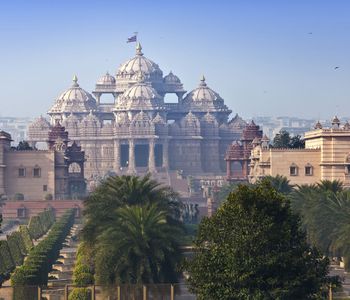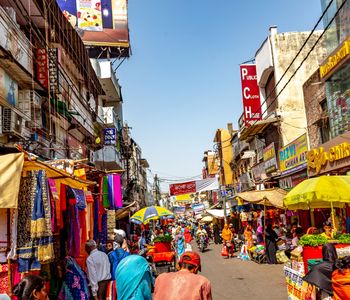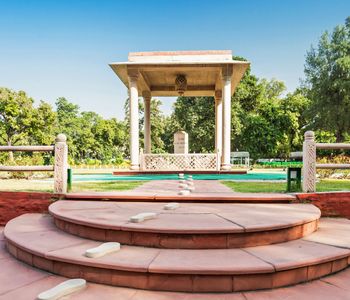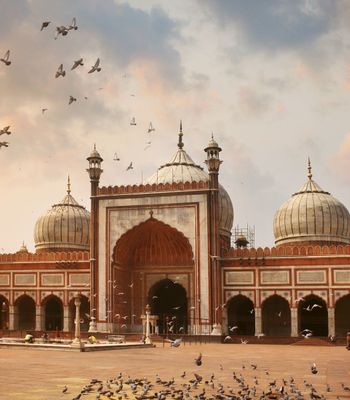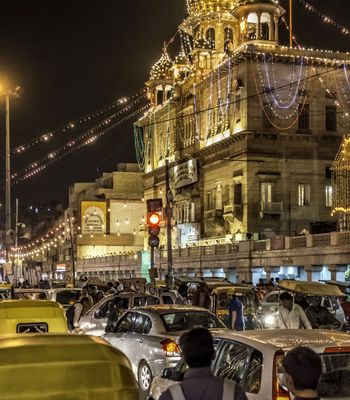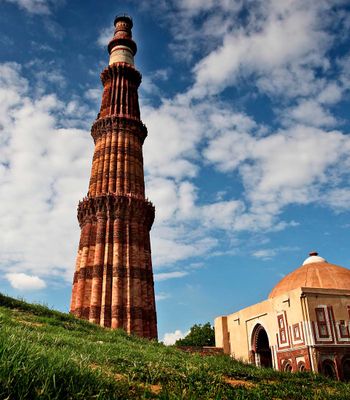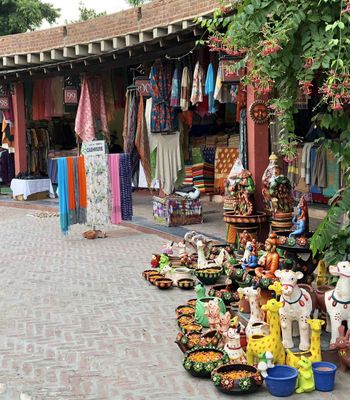Uttara Guruvayurappan Temple is a peaceful temple located in Mayur Vihar Phase 1. Unlike the towering shikharas and ringing bells of typical North Indian temples, this one draws you in with its modest wooden structure and traditional Kerala-style architecture.
Every ritual, every structure, every festival is done the traditional Malayali way. If you’ve ever wanted to experience Kerala’s temple culture without going all the way south, this is where you go.
Legends & Life: The Heart of the Place
Back in the 1970s, many Malayali families moved to Delhi for work, education, and government jobs. As the community grew, they felt the need for a temple where they could worship in their traditional Kerala style. Most temples in Delhi followed North Indian rituals, which felt unfamiliar to them. So, they envisioned a temple that would reflect their native traditions.
The Arsha Dharma Parishad made this come true by setting up a temple in Mayur Vihar, which took its inspiration from the original Guruvayur temple in Kerala. The temple was established on 17th May 1983.
Today, the Uttara Guruvayurappan Temple is looked after by the Arsha Dharma Parishad Trust, and every day, priests perform rituals following the traditional Tantric ways of Kerala temple worship.
Architecture and Layout: Kerala in Miniature
The entire temple follows Kerala-style temple architecture, which focuses on simplicity, woodwork, and natural beauty. Here’s what you’ll notice:
- Sloping tiled roofs: These are a classic Kerala style, made to handle heavy rain but kept here for tradition.
- Narrow entrance paths (Chuttambalam): These lead to the central shrine and give the temple a quiet, enclosed feel.
The central shrine houses Lord Krishna, known here as Guruvayurappan, in the form of a small boy holding butter—a favourite image in Kerala tradition. The temple has two big entrance gates and a divided main shrine for Lord Krishna and Goddess Bhagavati. It also houses small shrines for Ganapati, Shiva, Ayyappa, and a Sarpa Kavu for snake deities.
What to See and Experience
Here’s what you will experience when you visit the Uttara Guruvayurappan Temple:
- The day starts early with Nirmalyam (removal of the previous night’s offerings), followed by Usha Pooja (morning prayers).
- Throughout the day, there are offerings, chants, and deeparadhana (waving of lighted lamps).
- In the evening, the temple lights up with dozens of oil lamps, creating a peaceful and glowing atmosphere.
Timing Your Trip Right
The temple is open all year, but if you want to enjoy it fully, here’s what you should keep in mind:
Best Months
October to March. Delhi is cooler, and there are many festivals during this period.
Best Time of Day
- Mornings (6 AM – 9 AM): Fresh air, peaceful environment.
- Evenings (5 PM – 8 PM): Best time to see the temple lights and evening pooja.
How to Get to the Temple
The temple is located in Mayur Vihar Phase 1, East Delhi. It’s easy to reach by public transport.
By Air
The nearest airport is Indira Gandhi International Airport (IGI). From there, you can take the Airport Express Line towards the New Delhi Metro Station.
By Train
The closest train station is New Delhi Railway Station. Once you get there, you can hop on a local bus, take an auto-rickshaw, or call a cab to reach the temple.
By Road
The temple is easily accessible from Noida, Laxmi Nagar, or Akshardham. The nearest metro station is Mayur Vihar Phase 1 (Blue Line). The temple is about 750 meters from the station, just a short walk of around 3 minutes. Several DTC buses pass through Mayur Vihar as well. You can get off at the Mayur Vihar Phase 1 bus stop and walk.
When the Town Comes Alive: Festivals & Big Days
The temple calendar is full of interesting events. If you visit during one of these, you’ll see the temple at its liveliest.
- Janmashtami: Lord Krishna’s birthday. There’s chanting, decoration, and special poojas. Kids sometimes dress up as Krishna.
- Vishu (Malayali New Year–mid-April): People dress up in traditional clothes; flower arrangements and offerings are done.
- Onam (Harvest festival–August/September): It’s the biggest celebration. You might witness floral carpets, traditional music, dances, and a feast.
- Mandala Pooja (Nov–Jan): Devotees of Lord Ayyappa come wearing black and attend special prayers.
Beyond just being a place of worship, the temple has grown into a hub where the community gathers, celebrates, and connects. You may get to see classical music concerts, Bharatanatyam or Mohiniyattam dances, devotional bhajans, etc. So next time you want a quiet, meaningful break, step into this Kerala-style temple and let its calm wash over you.

